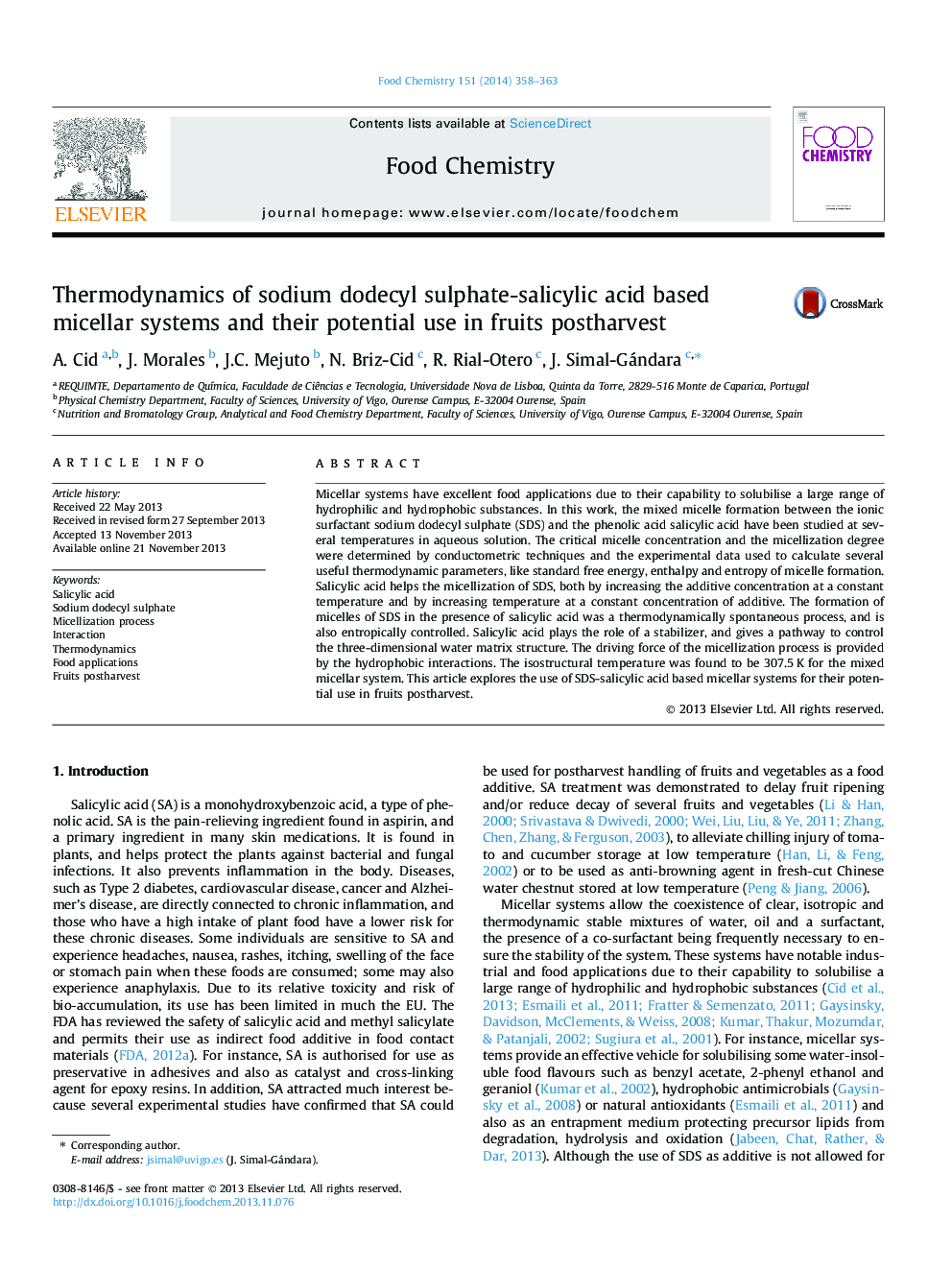| Article ID | Journal | Published Year | Pages | File Type |
|---|---|---|---|---|
| 1185230 | Food Chemistry | 2014 | 6 Pages |
•Micelles have food uses due to their ability to solubilise a large range of substances.•Microstructure and properties of micelles can be tuned for food applications.•Salicylic acid (SA) helps to the micellization of sodium dodecyl sulphate (SDS).•SA acts as a stabilizer to control the 3D matrix water structure.•Explores the use of SDS-SA micellar systems for their use in fruits postharvest.
Micellar systems have excellent food applications due to their capability to solubilise a large range of hydrophilic and hydrophobic substances. In this work, the mixed micelle formation between the ionic surfactant sodium dodecyl sulphate (SDS) and the phenolic acid salicylic acid have been studied at several temperatures in aqueous solution. The critical micelle concentration and the micellization degree were determined by conductometric techniques and the experimental data used to calculate several useful thermodynamic parameters, like standard free energy, enthalpy and entropy of micelle formation. Salicylic acid helps the micellization of SDS, both by increasing the additive concentration at a constant temperature and by increasing temperature at a constant concentration of additive. The formation of micelles of SDS in the presence of salicylic acid was a thermodynamically spontaneous process, and is also entropically controlled. Salicylic acid plays the role of a stabilizer, and gives a pathway to control the three-dimensional water matrix structure. The driving force of the micellization process is provided by the hydrophobic interactions. The isostructural temperature was found to be 307.5 K for the mixed micellar system. This article explores the use of SDS-salicylic acid based micellar systems for their potential use in fruits postharvest.
